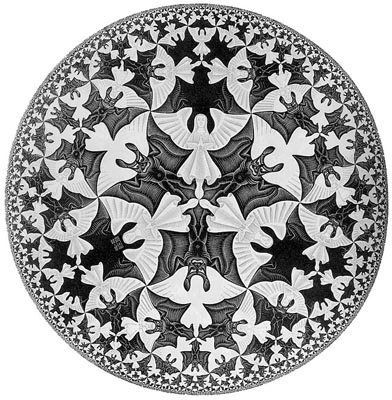Two weeks ago I was finally able to finish Sagan’s ‘Cosmos’ book. I had immensely enjoyed myself reading that book, in spite of the obviously political propaganda (all for a good cause, of course) painted by the author towards the last chapters. I am all for space exploration – by all means let’s bring all our resources together to launch space vehicles to ‘widen our horizon.’ But I do not agree at all that the plight of human beings on this earth are any better, neither are the children of the world today living any better than their ancestors. I think of the 9-11 tragedy, the continuing war in Iraq, the recent Asian tsunami, and I shudder. The book was written in 1981, a few years after the successful launching of Voyagers 1 & 2 – and way before all these global disasters ever happened.
Anyway, I’ve picked up another book gathering dust in our book shelf (Baggy has a collection of geek books I’ve never read before, because most of them were with him in Osaka all those years). The one I’m reading now is “The Large, the Small, and the Human Mind” by Roger Penrose. I was intrigued by the title. I only know Penrose through my EM classes in college, and of course through Stephen Hawking’s book, “A Brief History of Time.” But this is the first time that I actually get to read a book he wrote.

The first chapter is on space-time cosmology. More like a time-warp for me, because suddenly I am again reading about all those lessons we first learned in undergraduate Physics. Lobachevskian space, Minkowski space-time – I could almost hear Jerrold Garcia and Dr. Chan! When I was a 16-year-old learning about those concepts for the first time, I felt overwhelmed and scared. Sixteen years later, and I read about these things all over again, I feel a sort of odd connection, and simultaneously an unexpected, sudden clear understanding of those concepts. Perhaps because this time some concepts are being relearned, and perhaps because this time is unencumbered by unnecessary burdens such as passing or failing grades. I was scared to fail my course, and so I studied like crazy, but I doubt it if I had any understanding of what I was studying. Maybe I just didn’t appreciate it that time.
Back to the book – I was fascinated by the illustration of Lobachevskian space using Escher’s artwork. I thought he was just an artist? I saw some of his sketches on t-shirts sold in one of the shops in Huis Ten Bosch in Nagasaki (Escher’s Dutch, by the way). Circle Limit 4 is more than just a collection of angels and demons, but a perfect way to illustrate how distorted Lobachevskian space would be when illustrated on 2D. Do you see angels first, or demons? 😛
More on this book in upcoming entries!